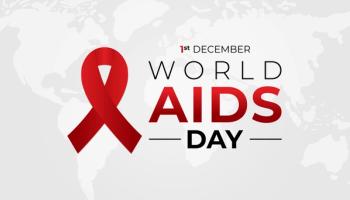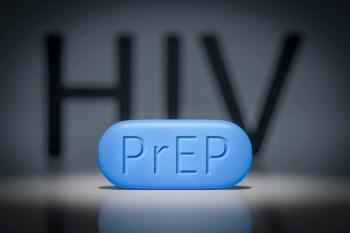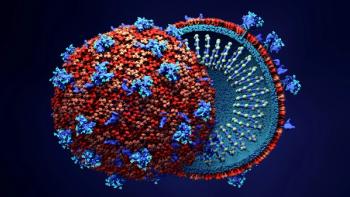
35th World AIDS Day Marks 20 Years of PEPFAR: Challenges and Strategies to Combat HIV/AIDS
PEPFAR, having invested $100 billion and saved 25 million lives in the global fight against HIV/AIDS, faces Congressional hurdles in its reauthorization due to abortion debates. Despite widespread support and no evidence of abortion-related activities, the legislative process is at a standstill. Members of PEPFAR and authors of a recent editorial stress the significance of PEPFAR and advocate for integrating behavioral and social science into healthcare programs to achieve UNAIDS targets and address barriers in HIV/AIDS testing and treatment.
This Friday, December 1, commemorates the 35th World Aids Day in occurrence with the 20 years of the U.S. President’s Emergency Plan for AIDS Relief (PEPFAR).
Established by former Republican president George W. Bush in 2003 to assist in combatting the HIV/AIDS epidemic across the globe, PEPFAR has been funded over $100 billion toward the epidemic’s response by the U.S. government, has saved 25 million lives, prevented millions of HIV infections and accelerated progress toward controlling the disease in more than 50 countries.
While facing numerous challenges, the reauthorization of PEPFAR, the nation's largest commitment to combat HIV/AIDS and eliminate it as a public health threat by 2030, is currently stalled in Congress due to discussions related to abortion. Despite broad and bipartisan support, this crucial initiative is facing challenges within the legislative process.
Abortion was publicly raised as one of the discussion points in PEPFAR reauthorization in early May after a coalition of organizations opposed to abortion rights raised their concerns that PEPFAR may be supporting abortion.
However, a KFF analysis found there has been no evidence produced that PEPFAR has supported any prohibited abortion activities.
In June, Ambassador John Nkengasong, head of PEPFAR, emphasized that PEPFAR strictly operates within the legal frameworks of the countries it serves and clarified that it does not support abortion in Africa.
PEPFAR communicated these principles and revised its strategic direction document to highlight that it does not fund abortions, aligning with longstanding legal restrictions on foreign assistance related to abortion.
The U.S. government employs training and compliance measures to ensure funding recipients adhere to these requirements.
A recent editorial in
The editorial also emphasized the effectiveness of PEPFAR in this two-decade-long fight.
The authors noted that more than 5 million children born to mothers living with HIV are now born free of the disease, largely attributed to PEPFAR. This success is also attributed to the availability of tools and knowledge aimed at eliminating the HIV/AIDS pandemic as a threat to public health within the next seven years.
To achieve the '95-95-95' targets set by the United Nations Program on HIV/AIDS (UNAIDS), focusing on ensuring that 95% of people living with HIV know their status, are on antiretroviral therapy, and have an undetectable viral load is crucial, the authors write.
Despite any efforts and progress toward the 95 goals, barriers still remain in getting people tested and providing timely antiretroviral therapy, especially for those facing challenges in accessing healthcare.
Stigma and discrimination, logistical hurdles, and the fear of mistrust in relationships are occurring obstacles, however, empowering folks who might not easily access care essential, authors claim.
Strategies to end the HIV/AIDS epidemic
In addition to empowering individuals, empowering health ministries, clinicians, community health workers, and HIV activists is essential for designing programs that ensure universal access to lifelong HIV care, tailored to individual needs, authors add.
With most new HIV infections occurring in adolescents and young adults, prioritizing young people, especially girls and women aged 15–24 and men aged 25–35, is also crucial.
In regions severely affected by HIV, like eastern and southern Africa, low testing rates among adolescents highlight the need for targeted efforts.
Additionally, ongoing prioritization of high-risk groups, such as sex workers and the LGBT+ community, is vital to ensure awareness and access to preventive treatments like PrEP.
Offering choices and establishing youth-friendly health services, like social networks, are key to supporting individuals at higher risk of stigmatization and discrimination, especially young people.
The authors also encourage healthcare schemes must be designed to ensure accessibility for those who stand to benefit the most, especially as new prevention tools like cabotegravir become available.
Incorporating behavioral and social science into healthcare program design is also crucial for testing, antiretroviral therapy, and prevention interventions.
The authors shared an example from South Africa, where men face challenges in seeking HIV testing and meeting UNAIDS 95-95-95 goals.
In 2020, a messaging strategy, providing information cards in Cape Town, nearly doubled the number of men accessing free HIV testing at a mobile clinic.
Overcoming another issue of reducing the time between HIV diagnosis and starting antiretroviral treatment, several supportive interventions can be implemented.
These strategies include sending reminders to individuals who tested positive, ensuring accessible transportation to clinics, and offering incentives, such as monetary rewards, to encourage timely treatment initiation.
The authors conclude their beliefs by noting that “investing in innovative strategies that meet the needs of individuals won’t just be key to ending the HIV/AIDS pandemic by 2030. “
“It will also help to ensure that global health systems are resilient and dynamic in the face of future public-health threats. And it will help to shift the focus of global health, so that solutions to problems for tackling disease increasingly come from the individuals and communities that are most affected, and less from high-income countries.”
Newsletter
Get the latest industry news, event updates, and more from Managed healthcare Executive.





















































